Breeding and keeping pigeons, their diseases and treatments
Many poultry farmers who breed chickens, geese and turkeys simply cannot resist acquiring gray-winged pigeons. They are grown for food, sport or exhibitions. But buying a couple of birds is not enough, pigeon breeding is a real art.
If you want to get these wonderful birds, but do not know where to start, the only right option is a dovecote. You should not compare domestic pigeons with wild ones, since the immune system of the latter is much stronger than that of tame animals. This means that poultry are not able to tolerate low temperatures: the pigeon house needs to be insulated.
In pigeon housing, the temperature should not fall below 10 degrees, this applies to carrier, fighting pigeons and breeds that go for meat. For decorative, the temperature inside the dovecote is 18-20 degrees and above. Dovecotes are installed in the attic. Warm air inside the house rises to the ceiling, warming the attic.
Interesting fact! Domestic breeds of pigeons do not tolerate low temperatures well, but at the same time they feel great even at +40 degrees. They can sit or fly for a long time under the scorching sun.
This does not play a special role in the design of the dovecote, but there are a few simple rules that are necessary for the normal life of birds.
- Pigeon droppings contain a large amount of ammonia, and therefore the dovecote must be ventilated, the “room” must be regularly cleaned, and the walls treated with lime to prevent the formation of fungi, viruses and bacteria.
- The dovecote should not stand in a draft or open area. This can cause a variety of inflammations. All the strength of the dove will be spent on fighting diseases and heating the body.
- Pigeon housing should have nests and perches for a comfortable overnight stay for thoroughbred pigeons.
- Feeders are installed in the dovecote, especially if short-beaked ones are bred.
- The drinking bowl should be covered with a kind of net or grate, into which only the bird's beak will fit, and not the legs or the whole body.
Interesting! Among all domestic birds, Baku pigeons, Uzbek pigeons and Bukhara pigeons have the strongest immunity. Therefore, many beginner pigeon breeders start with these breeds.
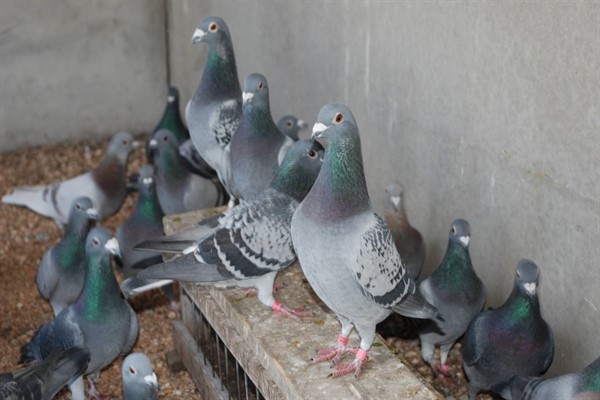
Compared to street birds, the metabolism of domestic birds is much lower. This is fraught with the fact that if the bird sits in a cage for a long time, it simply begins to grow fat. For meat - it's not so scary, because for this they are grown. But the speed indicators, the post, the game and the fight of flying pigeons will suffer greatly. To avoid such an outcome, they regularly “walk”: 2-3 times a day for 60 minutes. This is more than enough for the bird to feel normal.
Important! Keep an eye out for pigeons not being hunted by cats, dogs, or birds of prey. Pets should be supervised regularly. Birds should not be allowed to roam near highways or power lines. The fact is that pigeons of meat breed and decorative ones have poor endurance and maneuverability, and at any moment they can collapse to the ground.
If the animal, after being released to fly, tries to return to the dovecote or sits on the roof of the house, it is immediately driven away, forced to fly. After the walk, the pigeons need to be fed.
Feeding domestic pigeons
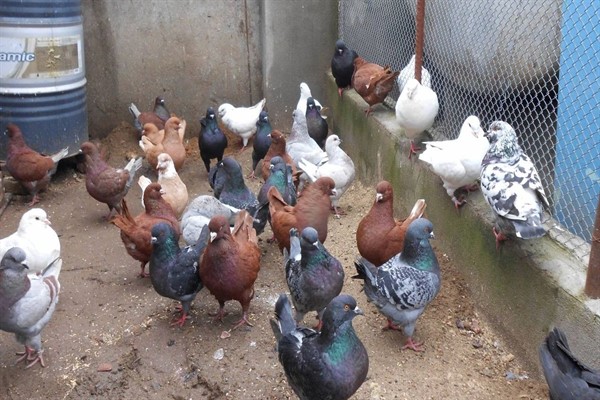
Pigeon breeding is a complex science, the lion's share of which is feeding. Like meat pigeons, so racing and sports, they all need an individual diet, most of which consists of grain mash.
Eat in a day:
- meat breeds - 70 grams;
- sports - 40 grams;
- flight - 50-55 grams;
- decorative birds - 35-40 grams.
If you do not adhere to these norms, then the bird will either suffer from obesity or lose weight, lose weight due to hunger.
Important! The diet of ornamental breeds, Ukrainian spinners and other birds that have weak immunity also includes 10% of the daily allowance of vitamin supplements and minerals.
Business
Many pigeon breeders raise birds as a hobby, as domestic breeds have a first-class exterior and are pleasing to the eye not only for the owner, but also for guests. For such purposes, no more than two dozen pigeons are grown.
Meat breeds of pigeons have a more practical meaning, they are often grown for meat as a business. Despite the fact that the bird itself has a rather modest body size, the cost of a pigeon is very high. Usually such dishes are served in expensive restaurants and cafes. They have tender meat and contain a minimum of calories. In such cases, keeping birds is not limited to a few hundred individuals. Meat breeds are popular in Ukraine, Russia and Belarus.
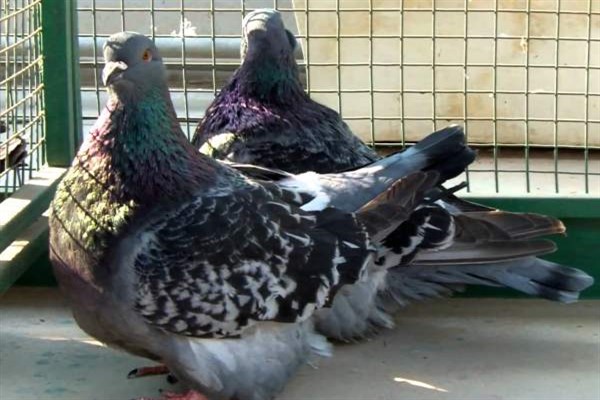 meat breeds
meat breeds Racing breeds also benefit their owner. White doves are regularly booked for weddings or other events. They have a good exterior, and an excellent fight. It is difficult to say the same about post breeds, since in the 21st century they have no special practical meaning.
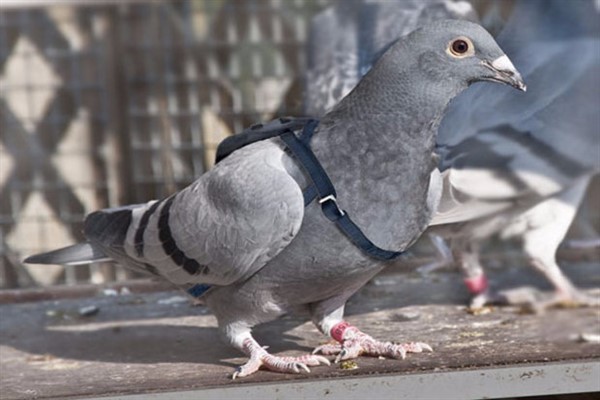 carrier pigeons
carrier pigeons Breeding birds as a business will bring large incomes to pigeon breeders who breed decorative pigeons. On the territory of the CIS, German show pigeons are most welcomed: such an exterior cannot be found anywhere else in the world. One such individual can cost several hundred dollars, depending on the purity of the breed.
Interesting! For decorative and exhibition purposes, linear breeding is used. This process consists in the fact that only birds of the same breed are crossed in order to maintain purebredness. Meat ones are crossed randomly, choosing the largest individuals. This is how new breeds of pigeons appear.
Treatment and prevention of diseases
Winter pigeon breeding is a real challenge even for an experienced ornithologist. As already mentioned, in winter these animals feel very bad, as they are “dressed up” and their body is not able to cope with viruses on its own.
The most common pigeon diseases and their control
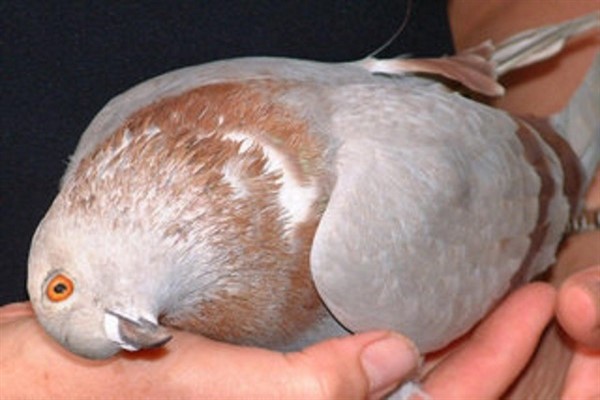 spinner
spinner A contagious disease that spreads incredibly quickly between birds. The spread of the virus occurs through food, water and air. For the treatment of chickenpox at home, use Gamavit, Fosprenil or Sporovit. A sick bird stops eating, but constantly drinks water, the droppings become white or green. The bird cannot be lifted into the air. For the prevention of chickenpox, drugs La Sota, Nobilis, Gam 61 or Loseval are used. These vitamin supplements are added to food to prevent chickenpox.
Important! If you find a bird with the above symptoms, it must be immediately separated from the rest of the flock until all animals are sick.
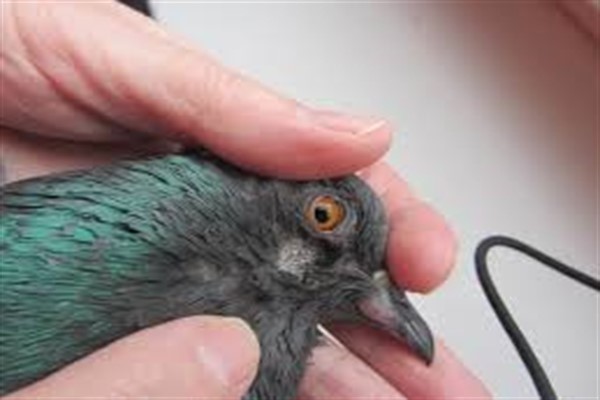
Smallpox. One of the most dangerous viruses that can spread even a wild pigeon sitting on a balcony or windowsill. The first symptoms appear as early as 2 weeks after the disease. Their activity decreases, their wings sag, the pigeons shy away from the light, a reddish rash appears near the beak and eyes. The rash is treated with iodine, boric acid or furacilin. To treat the disease itself, tetracycline or drugs from its group are used. To avoid infection, pigeon houses regularly whiten, boil water and add potassium permanganate to it.
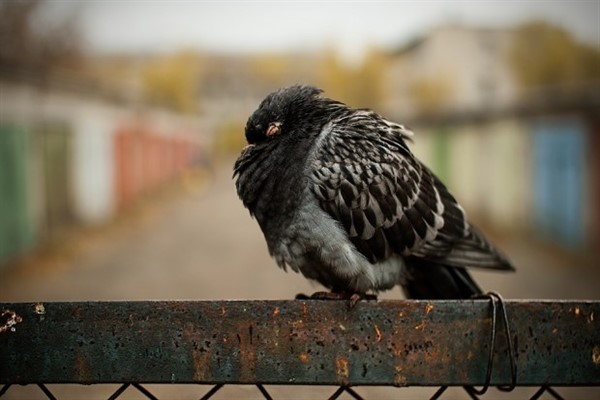
In winter, the temperature drops, which creates an incredible load, especially on young animals. In combination with uncleaned dovecote or dirty water, this can cause Ornithosis. A sick bird begins to be afraid of the light, its eyes are constantly watery, and thick mucus sticks to the eyelids. Such a bird is immediately separated from the flock, since Ornithosis is an incredibly contagious disease and is transmitted through the air, with water or food. Orni Cure and Orni Injection help in the treatment of the disease. So that the pigeons do not get sick in the dovecote, you should regularly clean and change the water.
These diseases affect birds not only on large farms, where it is difficult to keep track of cleanliness, but also in the country, where, it would seem, cleaning the dovecote is not such a big difficulty. The 3 above diseases are the most common.
These are all the practical tips you need to know for beginner pigeon breeders. Now it’s clear where to start breeding these beautiful birds and what kind of care they need.




